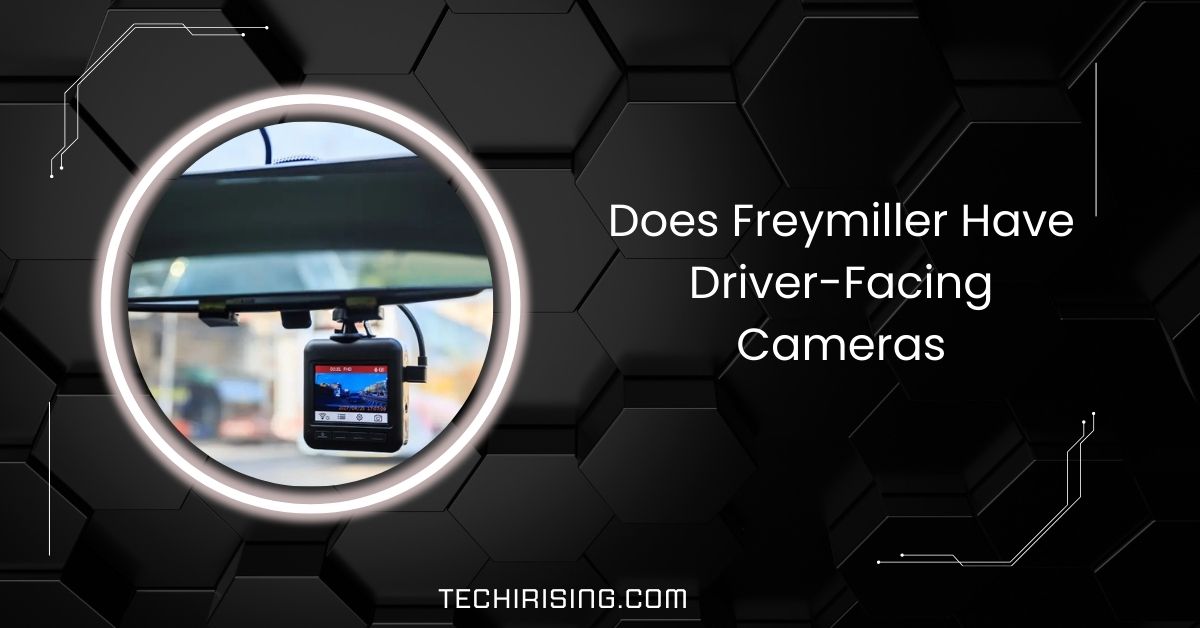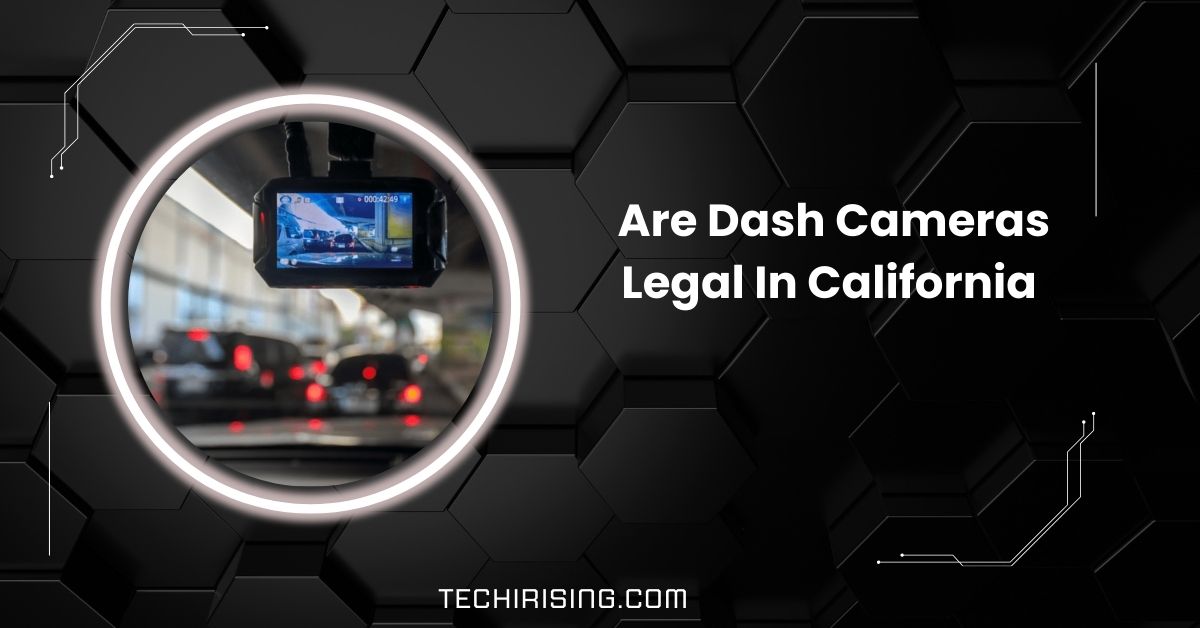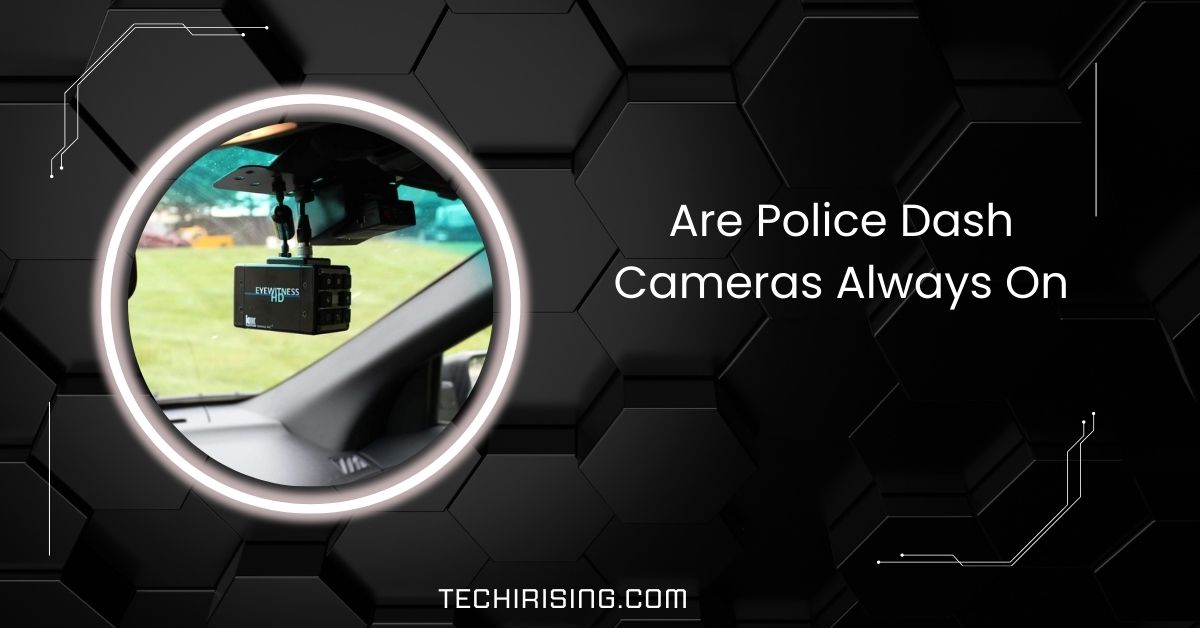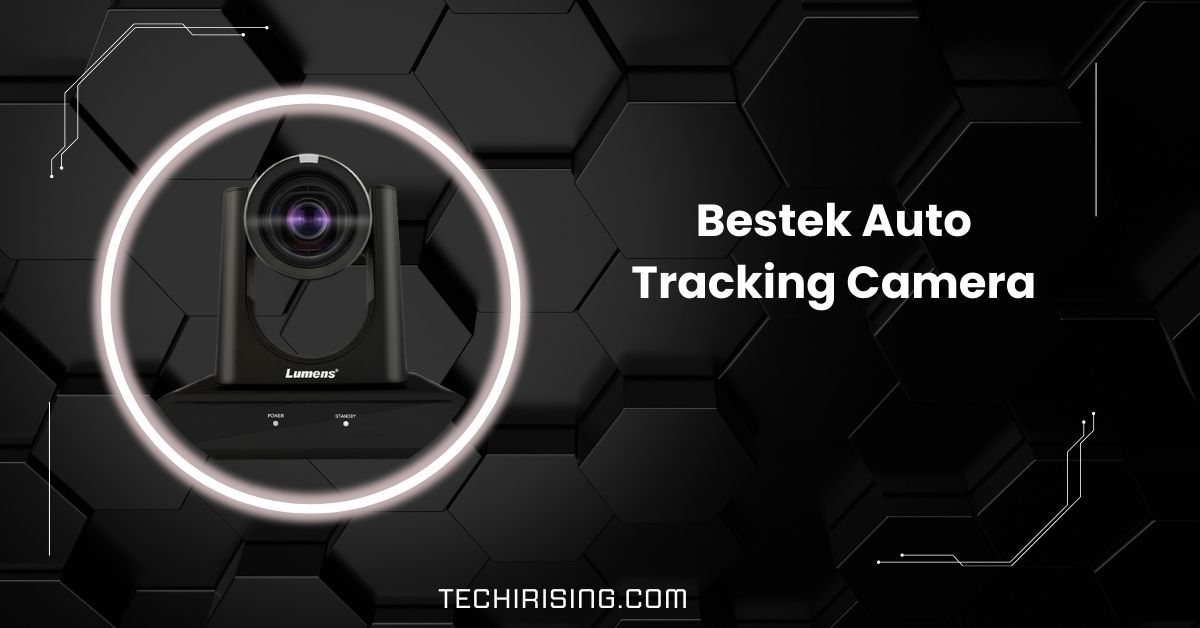Driver-facing cameras are becoming increasingly common in the trucking industry, with companies like Freymiller using them to enhance road safety.
Freymiller does use driver-facing cameras in some of its trucks, though not all trucks are equipped with them. These cameras help monitor driver behavior for safety, but their use may vary across different vehicles.
In this article, we’ll explore how Freymiller and other companies use driver-facing cameras, the benefits they bring to safety, and address common questions about their use and potential privacy concerns.
What Are Driver-Facing Cameras?
Driver-facing cameras are small devices inside trucks that keep an eye on drivers while they’re on the road. They help spot things like distractions, tiredness, or unsafe driving.
These cameras are there to improve safety, giving real-time feedback or saving videos for training later. While some drivers worry about privacy, these cameras are designed to focus on safety and helping drivers avoid accidents, not constant monitoring.
Do Freymiller Implements Driver-Facing Cameras!

Yes, Freymiller uses driver-facing cameras in their trucks. These cameras help monitor driver behavior to keep everyone safe on the road.
They are not always recording but turn on during sudden events like hard braking or sharp turns. Freymiller focuses on using these cameras for safety and training, not invading drivers’ privacy.
1. Freymiller’s Commitment to Safety:
Safety is a top priority for Freymiller. The company uses advanced technology, like driver-facing cameras, to protect drivers, cargo, and the public.
They offer ongoing training and coaching to promote safe driving practices. Freymiller’s focus on safety helps create trust with their drivers and clients while reducing accidents and risks on the road.
Also Read: Critical Forward Safety Functions Are Limited Camera Obscured
Why Driver-Facing Cameras?
Driver-facing cameras help improve road safety by keeping drivers alert and focused. They spot signs of fatigue, distractions, or risky habits and provide feedback to correct them.
These cameras are like a safety partner, helping prevent accidents before they happen. For companies like Freymiller, they’re a way to protect drivers, cargo, and everyone else on the road.
Freymiller’s Use of Driver-Facing Cameras!
Freymiller uses driver-facing cameras to make roads safer. These cameras check drivers’ behavior and help them follow safety rules.
They’re not recording all the time—only during specific events like sudden braking. Freymiller uses this technology to reduce risks, improve training, and ensure safe practices for everyone.
1. Impact on Drivers:
For drivers, these cameras can feel like a mixed bag. Some worry about privacy, but many find them helpful.
The cameras protect drivers by recording only during events like sharp turns, providing evidence if they’re not at fault. Freymiller respects drivers’ concerns while focusing on safety and making their jobs safer.
Policy on Driver-Facing Cameras
Freymiller’s driver-facing camera policy emphasizes safety and accountability. The cameras are used to monitor driver behavior and ensure safe driving.
While they are activated during specific events, the company strives to respect driver privacy and comply with all relevant regulations.
Reasons for Implementing Driver-Facing Cameras
1. Improving Safety
Driver-facing cameras help monitor drivers’ behavior to make sure they are alert and focused. They can detect signs of fatigue or distraction, helping prevent accidents and ensuring safer driving for everyone on the road.
2. Accountability and Transparency
These cameras promote accountability by recording drivers’ actions. If an incident occurs, the footage can be reviewed to determine if safety rules were followed, ensuring both drivers and companies maintain high standards.
3. Training and Coaching
Footage from driver-facing cameras is valuable for training new drivers. It helps teach them safe driving habits by showing real-life examples of both good and bad behaviors on the road, improving overall skills and safety.
4. Protecting Drivers
Driver-facing cameras can protect drivers by providing evidence in case of accidents or disputes. If a driver is not at fault, the camera footage can be used to prove their innocence and clear up misunderstandings.
5. Reducing Insurance Costs
By monitoring driving behavior and preventing accidents, companies can lower the number of claims and reduce insurance costs. Safer driving practices lead to fewer accidents, which helps companies save money on insurance premiums.
Why Does Freymiller Use Driver-Facing Cameras?

Freymiller uses driver-facing cameras to keep drivers, cargo, and roads safe. These cameras help monitor risky driving, address fatigue, and improve safety.
They’re also great for training, as drivers can learn from real-world examples. Freymiller’s goal is to prevent accidents and support their drivers, not to invade their privacy.
1. Freymiller’s Commitment to Safety:
Safety means everything to Freymiller. They invest in advanced tools, including driver-facing cameras, to keep drivers and cargo secure.
Regular training and monitoring help prevent accidents and improve driver skills. This focus on safety builds trust with drivers and customers, making Freymiller a company people feel confident working with.
Read More: Are Police Dash Cameras Always On – Truth Revealed – 2025!
Advantages of Driver-Facing Cameras
The use of driver-facing cameras offers several benefits:
- Enhanced Safety: By monitoring driver behaviour, these cameras can detect signs of fatigue, distraction, or unsafe practices, allowing for timely interventions to prevent accidents.
- Evidence Collection: In the event of an accident, footage from driver-facing cameras can provide clear evidence to determine fault and protect drivers from wrongful accusations.
- Driver Training: The footage can be used as a training tool to provide real-time feedback to drivers, helping them improve their driving skills and adhere to safety protocols.
Disadvantages and Controversies
Despite the advantages, driver-facing cameras are not without controversies:
- Privacy Concerns: Many drivers feel that constant monitoring infringes on their privacy, leading to discomfort and potential distrust between drivers and management.
- Data Misuse: There is a concern about how the recorded data might be used, including fears of footage being used to unfairly penalize drivers for minor infractions.
- Stress and Morale: Continuous monitoring can increase drivers’ stress, potentially affecting their performance and job satisfaction.
Balancing Safety and Privacy
The key challenge for companies like Freymiller is to balance the safety benefits of driver-facing cameras with the privacy concerns of drivers.
Transparent policies, such as accessing footage only in the event of incidents, and clear communication about the cameras’ purpose and use can help achieve this balance.
Engaging with drivers to address their concerns and involve them in decision-making can also foster trust and acceptance of the technology.
What Triggers Driver-Facing Cameras?
Driver-facing cameras activate during events such as hard braking, sharp turns, or sudden acceleration. These moments help capture important safety details without constant recording. The goal is to improve safety while respecting the driver’s privacy.
Does Warner Have Driver-Facing Cameras?
Yes, Warner uses driver-facing cameras in its trucks. These cameras help monitor drivers’ behavior to reduce accidents and promote safe driving practices. They’re focused on ensuring safety for drivers and others on the road.
What Is A Driver-Facing Camera?
A driver-facing camera is a device inside a vehicle that monitors drivers for safety. It checks for distractions, fatigue, or risky habits, helping prevent accidents. These cameras aim to improve driving behavior without invading the driver’s privacy.
Does Western Express Have Driver-Facing Cameras?
Yes, Western Express uses driver-facing cameras. They’re designed to monitor drivers and ensure safety on the road. The cameras help identify and correct unsafe behaviors, protecting both drivers and the public.
Are Driver-Facing Cameras An Invasion Of Privacy?
Some drivers feel driver-facing cameras invade their privacy, but these cameras are usually event-based, not constantly recording. Companies use them to improve safety, not to spy. With proper use, they help protect drivers while respecting their personal space.
Are Driver-Facing Cameras Always Recording?
No, driver-facing cameras are not always recording. They usually activate during events like hard braking or sudden turns. This selective recording ensures driver privacy while capturing important moments to improve safety and reduce accidents.
Are Driver-Facing Cameras Legal In The Us?
Yes, driver-facing cameras are legal in the US. They’re widely used in commercial trucks to monitor driver behavior and ensure safety. However, their use must comply with privacy laws and company policies to protect drivers’ rights.
Are Driver-Facing Cameras Legal In The Us For Trucks?

Yes, driver-facing cameras are legal for trucks in the US. They assist trucking companies in enhancing safety and minimizing accidents. These cameras are typically event-triggered and follow regulations to ensure they’re used responsibly.
Are Dash Cameras An Invasion Of Privacy?
Dash cameras can feel intrusive if they capture private moments, but they’re generally used for safety. Companies use them to monitor driving behavior and provide evidence during accidents. Responsible use minimizes privacy concerns while enhancing safety.
Must Know: Can I Have A Ring Camera At My Apartment – Ultimate Guide!
Does Werner Use Driver-Facing Cameras?
Yes, Werner uses driver-facing cameras in its trucks. These cameras help monitor driver behavior to ensure safety and prevent accidents. They are part of Werner’s commitment to keeping drivers and the public safe on the road.
Does Freymiller Have Driver-Facing Cameras In California?
Yes, Freymiller equips some of their trucks in California with driver-facing cameras. These cameras are used to improve safety and monitor driver behavior while adhering to state regulations for privacy and safety compliance.
Are Driver-Facing Cameras Legal In California?
Yes, driver-facing cameras are legal in California. They are commonly used in commercial vehicles to enhance safety. Companies must follow privacy laws to ensure the cameras are used responsibly and protect drivers’ rights.
Does Freymiller Have Driver Facing Cameras 2020
Yes, Freymiller had driver-facing cameras in 2020. These cameras were part of their safety measures, helping monitor driver behavior and ensuring safer driving. They focused on improving road safety for both drivers and the public while respecting privacy.
Does Freymiller Have Driver Facing Cameras 2021
Yes, Freymiller continued using driver-facing cameras in 2021. The cameras helped monitor driver actions to prevent accidents and ensure safety. This technology was used to protect drivers and improve overall driving behavior for a safer experience on the road.
Court Orders Trucking Company To Remove Driver-Facing Cameras
A court order might mandate a trucking company to remove driver-facing cameras if they are found to violate privacy laws or rights.
However, most companies use these cameras responsibly to improve safety, with protections to ensure they don’t invade drivers’ privacy.
Are Traffic Cameras Still Legal In California?
Yes, traffic cameras are still legal in California. They are used to monitor traffic violations like running red lights or speeding. California has laws regulating their use to ensure they don’t violate privacy rights while helping improve road safety.
Are Surveillance Cameras Legal In California?
Yes, surveillance cameras are legal in California, but there are specific rules to protect privacy. They can be used in public areas or for security, but certain guidelines must be followed to ensure they do not infringe on personal privacy rights.
What Companies Don’t Have Driver Facing Cameras?
Some trucking companies choose not to use driver-facing cameras, focusing only on outward-facing cameras for safety.
These companies prioritize privacy while still using technology to monitor the road and driver behavior for safety purposes. Specific company policies may vary.
Let’s start a list of companies with only OUTWARD FACING cameras
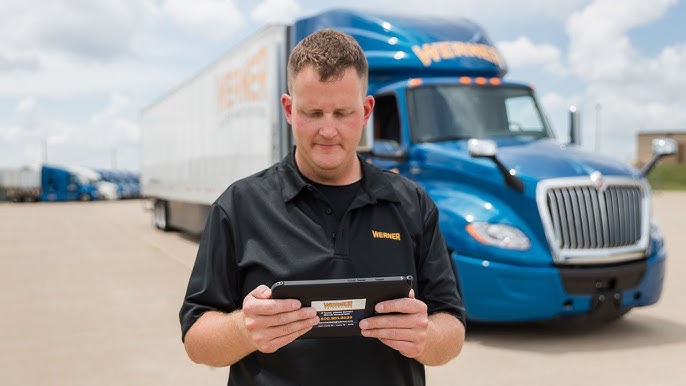
Some companies use only outward-facing cameras to monitor the road for safety. These cameras help track the environment around the truck, identifying potential hazards without monitoring the driver. Companies often choose this to avoid privacy concerns while still ensuring safety.
Companies who do NOT have driver facing cameras or voice recorders.
Certain companies avoid using driver-facing cameras or voice recorders, focusing solely on outward-facing cameras for safety.
These companies may prefer to respect driver privacy while still ensuring that safety standards are met through other monitoring methods like vehicle tracking systems.
FAQs
1. What is the purpose of driver-facing cameras?
Driver-facing cameras are designed to monitor driver behavior and enhance safety. They help detect fatigue or distractions, reducing accidents and improving driving habits.
2. Are there any alternatives to driver-facing cameras?
Yes, alternatives include using sensors, fatigue detection systems, or regular driver training. These methods help ensure safety without constantly monitoring the driver.
3. Do trucking companies have driver facing cameras?
Many trucking companies use driver-facing cameras to ensure safety. They help monitor driver behavior, ensuring that drivers follow safety protocols on the road.
4. Does PTL have cameras?
Yes, PTL (Prime Transport) uses both outward and driver-facing cameras in their trucks to enhance safety and monitor driver behavior while on the road.
5. What triggers driver-facing cameras?
Driver-facing cameras are usually triggered by sudden events like harsh braking, sharp turns, or signs of distraction, like a driver yawning or looking away.
6. Does Pam Transport have driver facing cameras?
Yes, Pam Transport uses driver-facing cameras in their trucks. These cameras monitor driver behavior and help improve safety by providing feedback for training.
7. Do driver-facing cameras record all the time?
No, driver-facing cameras typically don’t record all the time. They activate when certain events occur, such as sudden braking or erratic driving behavior.
8. Does Werner have driver facing cameras?
Yes, Werner Enterprises uses driver-facing cameras to ensure safe driving. These cameras monitor drivers and help improve safety on the road for everyone.
9. Does XPO have driver facing cameras?
Yes, XPO Logistics uses driver-facing cameras to track driver behavior and improve safety. The cameras help monitor actions and prevent potential accidents.
10. Are there any privacy concerns with driver-facing cameras?
Yes, some drivers are concerned about privacy as the cameras monitor their actions. However, many companies take steps to ensure privacy while improving safety.
Conclusion
In conclusion, Freymiller uses driver-facing cameras in some trucks to enhance safety by monitoring driver behavior. While concerns about privacy exist, these cameras are primarily used to improve road safety, training, and reduce accidents, benefiting both drivers and the company.

